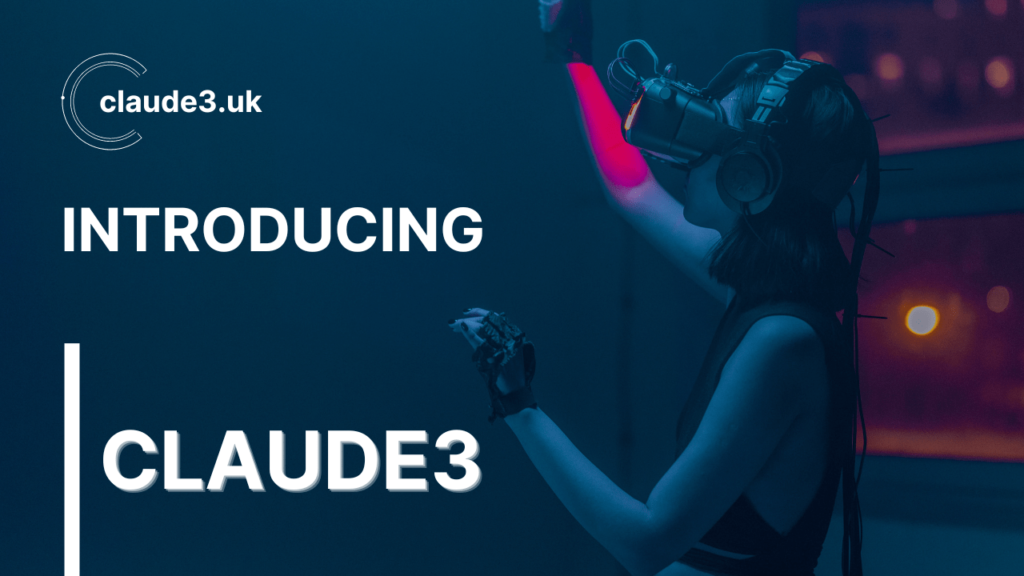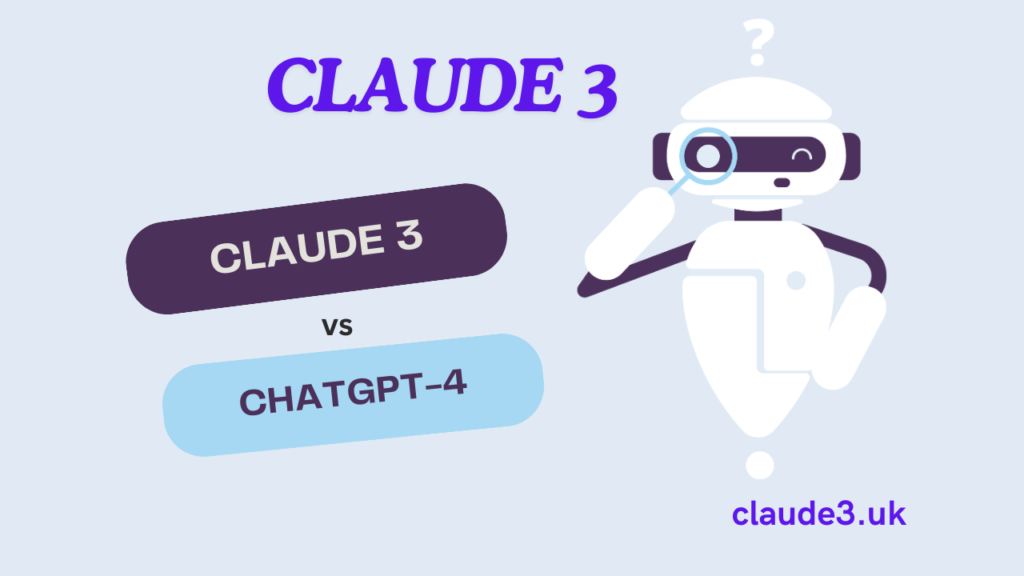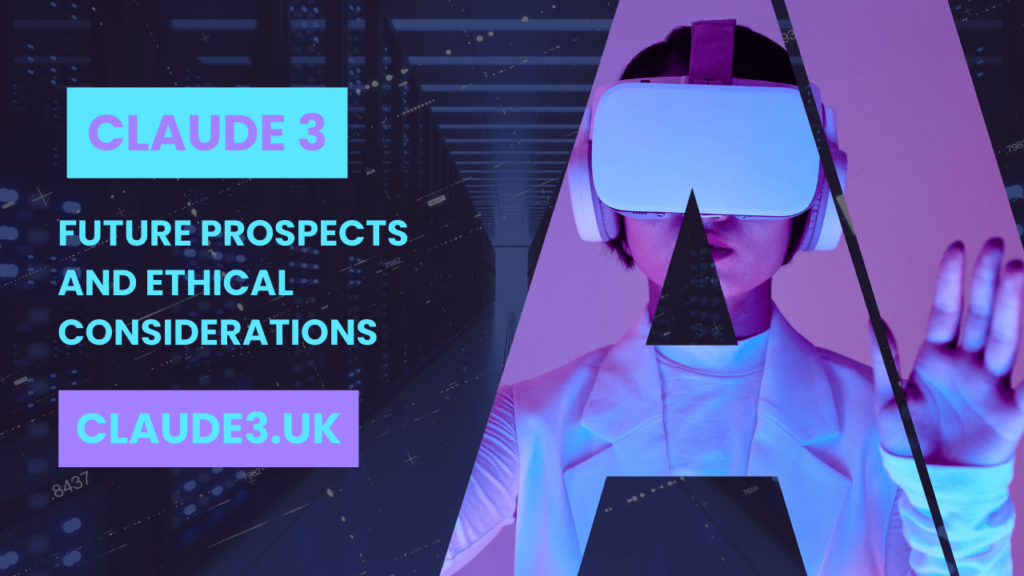Claude 3, the latest iteration in Anthropic’s line of advanced large language models (LLMs), made its debut in March 2024. This multimodal AI model brings significant advancements in reasoning, multilingual capabilities, and visual interpretation, setting a new benchmark for AI applications.
Named after Claude Shannon, the father of information theory, Claude 3 stands out not only for its language proficiency but also for its ability to analyze and interpret visual data such as charts, diagrams, and photos. This makes it an invaluable tool for businesses handling extensive visual data, including PDFs and presentation slides.
This article provides a comprehensive overview of Claude 3, detailing its structure, capabilities, comparison with other AI models, and the various applications it supports.

The Structure of Claude 3
Claude 3 is structured into three distinct models, each tailored to different performance needs and applications. These models are:
Claude 3 Opus: The Premium Model
Claude 3 Opus is the flagship model in the Claude 3 lineup. It offers the highest performance, excelling in complex tasks that require deep reasoning, extensive contextual understanding, and high precision. Opus is ideal for demanding applications where accuracy and comprehensive analysis are paramount.
Claude 3 Sonnet: The Second-Tier Model
Claude 3 Sonnet, while slightly less powerful than Opus, still provides robust performance suitable for a wide range of applications. It balances efficiency and capability, making it a versatile choice for tasks that require significant computational power but not to the extent needed by Opus.
Claude 3 Haiku: The Unreleased Model
Claude 3 Haiku, described as “light and fast,” is designed for efficiency. Although not yet released, it promises to deliver swift performance, making it suitable for applications where quick response times are crucial, and computational resources may be limited.

Core Technologies and Innovations
Reinforcement Learning and Human Feedback
At the core of Claude 3’s capabilities is its use of reinforcement learning and human feedback. This approach allows the model to predict the next most likely word in a response with greater accuracy. By continually learning from interactions and feedback, Claude 3 improves its understanding and output over time, resulting in more accurate and relevant responses.
Enhanced Contextual Understanding
One of the standout features of Claude 3 is its improved contextual understanding compared to its predecessors. This enhancement leads to fewer unnecessary refusals and more coherent and contextually appropriate responses. This improvement is particularly valuable in complex tasks that require nuanced understanding and interpretation of context.
Multimodal Capabilities
Visual Interpretation
Claude 3’s ability to analyze images sets it apart from many other LLMs. This includes interpreting charts, diagrams, and photos, which can be particularly beneficial for businesses dealing with large volumes of visual data. The capability to understand and process visual information expands the range of applications for Claude 3, making it a powerful tool in fields such as data analysis, reporting, and visual content creation.
Multilingual Proficiency
Claude 3 excels in multilingual tasks, supporting conversations and content creation in multiple languages. This capability is crucial for global businesses and organizations that operate in diverse linguistic environments. The model’s proficiency in various languages allows for seamless communication and collaboration across different regions and cultures.
Applications of Claude 3
Claude 3’s versatile capabilities make it suitable for a wide range of applications across different industries. Some of the key areas where Claude 3 can be utilized include:
Content Creation
Claude 3 can generate high-quality written content, making it a valuable tool for writers, marketers, and content creators. Whether it’s crafting blog posts, articles, or marketing copy, Claude 3 can assist in producing engaging and relevant content tailored to specific audiences.
Code Generation
For developers and programmers, Claude 3 offers the ability to generate code snippets, provide programming advice, and even debug code. This can significantly speed up the development process and improve productivity, especially for routine coding tasks.

Multilingual Conversations
Claude 3’s ability to conduct conversations in multiple languages makes it an excellent tool for customer support, international communications, and multilingual collaborations. It can handle queries and interactions in various languages, ensuring clear and effective communication.
Knowledge Collaboration
Claude 3 can assist in knowledge collaboration by synthesizing information from diverse sources, providing insights, and suggesting solutions. This makes it an ideal tool for research, academic collaborations, and corporate knowledge management.
Writing Assistance
From drafting emails to composing reports, Claude 3 can provide writing assistance that improves efficiency and accuracy. Its contextual understanding ensures that the content is coherent and relevant, tailored to the specific needs of the user.
Social Media Marketing
In the fast-paced world of social media, Claude 3 can help create compelling posts, respond to customer inquiries, and manage social media campaigns. Its ability to understand and generate relevant content quickly makes it a valuable asset for social media managers.
Content Strategy
Claude 3 can analyze trends, suggest content ideas, and help develop a comprehensive content strategy. By leveraging its analytical capabilities, businesses can create targeted content that resonates with their audience and drives engagement.
Email Writing
Crafting effective emails is crucial for business communication. Claude 3 can assist in writing clear, concise, and impactful emails, whether for marketing purposes, customer support, or internal communications. Its ability to tailor messages to specific contexts ensures that the emails are relevant and effective.
Comparison with Other AI Models
Claude 3 vs. GPT-4
GPT-4, developed by OpenAI, is one of the most well-known and widely used LLMs. Comparing Claude 3 with GPT-4 highlights several similarities and differences:
Language Understanding and Generation
Both Claude 3 and GPT-4 excel in natural language understanding and generation. However, Claude 3’s improved contextual understanding may give it an edge in producing more coherent and contextually appropriate responses, particularly in complex scenarios.
Multimodal Capabilities
While GPT-4 has strong text-based capabilities, Claude 3’s ability to interpret visual data, including charts, diagrams, and photos, sets it apart. This multimodal capability allows Claude 3 to be used in a wider range of applications where visual interpretation is crucial.

Multilingual Support
GPT-4 supports multiple languages and is capable of multilingual tasks. Claude 3, however, is specifically noted for its proficiency in multilingual conversations, which might make it more effective in certain international and multilingual contexts.
Customization and Integration
Both models offer customization and integration options, but Claude 3’s modular approach with distinct models (Opus, Sonnet, Haiku) provides tailored performance for different needs. This could make it easier for businesses to choose the right model based on their specific requirements.
Claude 3 vs. Google’s LaMDA
LaMDA (Language Model for Dialogue Applications) by Google is another prominent LLM designed for conversational applications. Comparing Claude 3 with LaMDA reveals key points:
Conversational Abilities
LaMDA is optimized for dialogue, making it highly effective in conversational contexts. Claude 3, with its advanced reasoning and contextual understanding, also performs well in conversations but offers broader applications beyond dialogue, such as visual interpretation and content creation.
Application Scope
Claude 3’s multimodal capabilities and use in diverse applications like content creation, code generation, and visual data analysis provide it with a wider scope compared to LaMDA, which is primarily focused on enhancing conversational AI.
Claude 3 vs. Microsoft’s Turing NLG
Microsoft’s Turing Natural Language Generation (NLG) model is known for its large-scale language generation capabilities. Here’s how Claude 3 compares:
Scale and Performance
Turing NLG boasts impressive scale and performance in generating large volumes of text. Claude 3, while also powerful, emphasizes contextual understanding and visual data interpretation, offering a different set of strengths.
Visual Interpretation
One of Claude 3’s distinct advantages is its ability to analyze and interpret visual data, which is not a primary feature of Turing NLG. This makes Claude 3 more versatile for applications involving visual content.
Reinforcement Learning
Claude 3’s use of reinforcement learning and human feedback to improve its predictions and responses is a notable feature. While Turing NLG also benefits from advanced training techniques, the specific reinforcement learning approach of Claude 3 may contribute to its enhanced contextual understanding and accuracy.

Future Prospects and Ethical Considerations
The Unreleased Claude 3 Haiku
While Claude 3 Haiku remains unreleased, its anticipated capabilities suggest a focus on speed and efficiency. As businesses increasingly rely on AI for real-time applications, Haiku could play a significant role in scenarios where rapid response times are essential.
Ethical AI and Bias Mitigation
Anthropic is known for its commitment to developing AI that is safe, interpretable, and aligned with human values. Claude 3 continues this tradition by incorporating mechanisms to reduce bias and ensure ethical use. Ongoing efforts in transparency and fairness are critical as AI models like Claude 3 become more integrated into everyday applications.
Integration and Customization
The modular nature of Claude 3 allows for seamless integration into existing workflows and systems. Businesses can customize the model to suit their specific needs, enhancing its utility and effectiveness. This flexibility is key to maximizing the benefits of AI across different sectors.
Conclusion
Claude 3 represents a significant leap forward in AI technology, offering advanced capabilities in reasoning, multilingual tasks, and visual interpretation. Its three-tiered model structure provides options for different performance needs, making it accessible and useful for a broad range of applications. When compared with other leading AI models like GPT-4, LaMDA, and Turing NLG, Claude 3 stands out for its multimodal capabilities and improved contextual understanding.
As businesses and organizations continue to explore the potential of AI, Claude 3 stands out as a powerful tool that can drive innovation, efficiency, and effectiveness in various domains. With its blend of advanced technology and ethical considerations, Claude 3 is poised to make a lasting impact on the future of AI. If you have any of your Questions, feel free to Contact Us!!
FAQs
What is Claude 3?
Claude 3 is the latest large language model (LLM) developed by Anthropic, released in March 2024. It is a multimodal AI capable of reasoning, handling multilingual tasks, and interpreting visual data such as charts, diagrams, and photos.
What are the different versions of Claude 3?
Claude 3 comes in three versions:
1. Claude 3 Opus: The premium model with the highest performance capabilities.
2. Claude 3 Sonnet: A second-tier model offering robust performance suitable for a wide range of applications.
3. Claude 3 Haiku: An unreleased model described as “light and fast,” designed for efficiency.
What makes Claude 3 different from its predecessors?
Claude 3 features improved contextual understanding, multimodal capabilities (including visual data interpretation), and enhanced multilingual support. It also uses reinforcement learning and human feedback for more accurate predictions.
How does Claude 3 handle visual data?
Claude 3 can analyze and interpret visual data such as charts, diagrams, and photos, making it useful for businesses that deal with large volumes of visual content in PDFs, slides, and other formats.
What is reinforcement learning in Claude 3?
Reinforcement learning in Claude 3 involves training the model using feedback from interactions to improve its predictions and responses over time. This method helps the model become more accurate and contextually aware.
How does Claude 3 manage multilingual tasks?
Claude 3 is designed to support multiple languages, enabling it to carry out conversations and generate content in various languages. This makes it ideal for global businesses and multilingual environments.
What are the primary applications of Claude 3?
Claude 3 can be used for a wide range of applications, including:
1. Content creation
2. Code generation
3. Multilingual conversations
4. Knowledge collaboration
5. Writing assistance
6. Social media marketing
7. Content strategy
8. Email writing
How can businesses benefit from using Claude 3?
Businesses can leverage Claude 3’s advanced capabilities for various tasks, such as generating high-quality content, automating code generation, providing multilingual customer support, and analyzing visual data to gain insights.
Can Claude 3 be integrated into existing systems?
Yes, Claude 3 is designed to be modular, allowing for seamless integration into existing workflows and systems. This makes it easy for businesses to customize the model to suit their specific needs.
How does Claude 3 compare to GPT-4?
While both Claude 3 and GPT-4 excel in natural language understanding and generation, Claude 3 offers enhanced contextual understanding and multimodal capabilities, including visual data interpretation. This makes Claude 3 more versatile in certain applications.
What are the differences between Claude 3 and Google’s LaMDA?
Claude 3 is broader in scope, offering advanced reasoning, visual data interpretation, and multilingual support, whereas Google’s LaMDA is primarily optimized for dialogue and conversational applications.
How does Claude 3 stack up against Microsoft’s Turing NLG?
Claude 3 offers unique features like visual interpretation and enhanced contextual understanding through reinforcement learning. While Turing NLG excels in large-scale language generation, Claude 3 provides a more versatile set of capabilities for diverse applications.
What can we expect from the unreleased Claude 3 Haiku?
Claude 3 Haiku is expected to be a “light and fast” model, designed for efficiency and quick response times. It will likely be suitable for applications requiring rapid processing and lower computational resources.
How does Anthropic address ethical considerations with Claude 3?
Anthropic is committed to developing AI that is safe, interpretable, and aligned with human values. Claude 3 incorporates mechanisms to reduce bias and ensure ethical use, maintaining transparency and fairness in its applications.
What are the future prospects for Claude 3?
Claude 3 is poised to become a key player in AI technology, with potential expansions in capabilities and applications. Its combination of advanced features and ethical considerations positions it to have a significant impact on various industries.